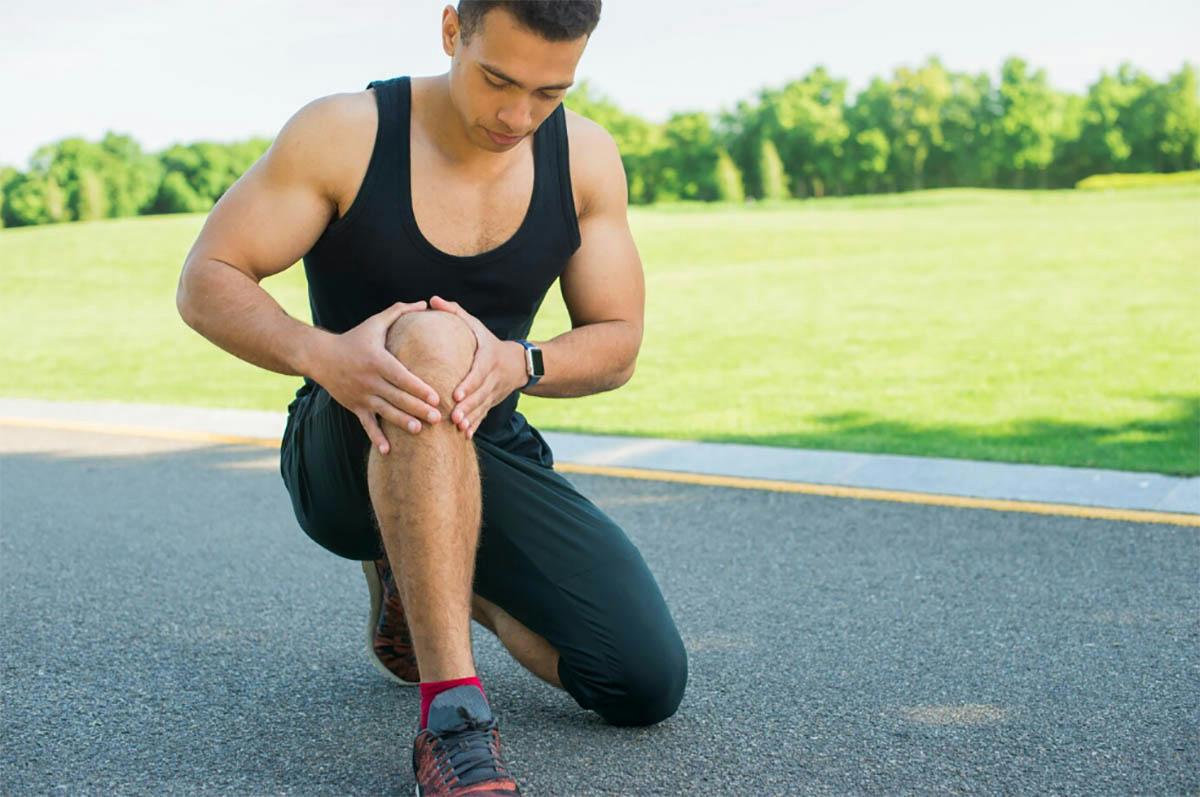Introduction
Knee pain, one of the common orthopedic injuries, is a prevalent condition that can significantly disrupt daily activities and reduce overall quality of life. In this article, we will delve into effective strategies for managing knee pain, offering insights into exercises, preventative measures, and recovery techniques.
What is Knee Pain and Its Causes
Knee pain, stemming from various reasons such as injuries, arthritis, and lifestyle choices, can often lead to different types of knee pain and discomfort associated with tight muscles and joint pain. Understanding these root causes is crucial for effectively developing a targeted approach to managing and alleviating knee pain.
Injuries
Whether resulting from accidents or overuse, injuries can be a primary source of persistent knee discomfort, often escalating to severe pain and making knee pain worse, requiring specific attention and care.
Arthritis
A chronic inflammatory condition, arthritis, specifically knee osteoarthritis or rheumatoid arthritis, affects the integrity of the joint, often contributing to ongoing knee pain and arthritis pain that necessitates targeted management.
Lifestyle Choices
Factors such as obesity and a sedentary routine can significantly contribute to the prevalence of chronic knee pain. Lifestyle plays a pivotal role; addressing these choices is crucial for fostering overall knee health.
Proper Warm-Up and Stretching Techniques

A proper warm-up is crucial for transitioning from rest to activity. It involves gradually increasing blood flow, elevating the heart rate, and enhancing joint flexibility, making muscles and joints, especially the knees, resilient to stress.
Customize your warm-up to fit your activities and fitness level, incorporating dynamic stretches for improved flexibility and muscle coordination. This gradual approach, like turning on a light, eases your body into activity, which is crucial for reducing the risk of sudden stress on joints, particularly the knees, during weight-bearing activities.
Choosing Low-Impact Activities
Choosing low-impact activities, like low-impact exercise, is a great option for those with knee pain. These exercises are gentle on the knees while promoting overall fitness and physical activity. Examples include:
Swimming: A low-impact cardiovascular and strength training exercise that reduces knee stress while engaging various muscle groups, especially beneficial for those concerned about the impact on body weight.
Cycling: Cycling is an excellent choice for knee health, offering a gentle, non-weight-bearing joint workout. Ideal for those concerned about excess weight, cycling also engages and strengthens gluteal muscles, promoting overall lower body strength.
Elliptical Training: This low-impact machine mimics running without impact, making it a suitable option for those with bad knees or knee concerns. Additionally, it engages and strengthens thigh muscles, offering a comprehensive lower-body workout.
Using Supportive Braces and Gear
As we delve into knee pain management, supportive braces and gear emerge as indispensable allies for an effective exercise program. Here’s a list of supportive tools to optimize knee support, especially crucial for addressing chronic pain:
Knee Sleeves
Provides compression and stability, aiding in pain relief and joint stabilization, making it an essential tool for various types of exercise, particularly beneficial for supporting collateral ligaments.
Hinged Knee Braces
Offers enhanced stability, especially beneficial for those with ligament issues, supporting motion exercises effectively and minimizing the impact on joints during high-impact activities, which is crucial for individuals managing meniscal tears.
Patellar Straps
Targets patellar tendon support, alleviating pain and promoting proper tracking, making it an essential aid for individuals dealing with patellofemoral pain syndrome and supporting crucial cruciate ligament health.
Compression Wraps
Aids in reducing swelling and provides overall joint compression, supporting conservative measures for effective knee care and offering relief for musculoskeletal pain, which is especially beneficial for patients with osteoarthritis.
Orthopedic Shoes
Supports proper alignment, reducing stress on the knees during daily activities, and is a valuable aid recommended by healthcare professionals for optimal joint health. Its efficacy is further validated by evidence from systematic review and meta-analysis.
Exercises to Strengthen the Knee Muscles

Exercises to strengthen the knee muscles are pivotal in effective knee pain management. Building strength in the surrounding muscles enhances stability and reduces pain.
Harvard Health suggests including the following exercises in your specific regimen designed to fortify knee joints, a recommendation often emphasized in physical therapy programs.
Leg Raises: Lift one leg at a time while lying down, engaging the quadriceps for enhanced strength, a beneficial exercise often recommended for weight loss and overall knee health.
Hamstring Curls: Bend your knees and lift your heels toward your buttocks, targeting hamstring muscles and engaging hip abductors for improved strength.
Straight Leg Raises: Lift your leg straight while lying down, focusing on quadriceps strength, a beneficial exercise to address the prevalence of knee pain.
Calf Raises: Elevate your heels while standing, engaging calf muscles for improved knee stability, a vital component of any effective clinical exercise program.
Wall Sits: Lower into a seated position against a wall, emphasizing quadriceps endurance and strength.
Comprehensive Knee Care Strategies
As we delve into holistic knee care, it’s essential to adopt strategies encompassing various facets of well-being, providing valuable insights into how to manage knee pain. This includes the following:
Managing Knee Pain with Ice and Heat Therapy
Strategically using ice and heat therapy provides effective relief for knee pain, offering valuable knee pain relief tips. Cold therapy reduces inflammation and numbs acute pain, while heat therapy promotes blood flow, eases stiffness, and alleviates chronic discomfort.
Modifying Activities to Reduce Knee Stress
As we navigate knee pain management, adapting activities becomes a pivotal strategy. SpecificSpecific movements may exacerbate discomfort, making it crucial to identify and modify them.
Here’s a list of how to proactively craft a knee-friendly lifestyle:
Identify Triggers: Recognize activities that may worsen knee pain and pinpoint potential triggers.
Alternative Movements: Offer insights into alternative movements or modifications that alleviate knee stress.
Proactive Approach: Empower individuals to make informed choices, ensuring activities contribute positively to overall knee health.
Strategic Modifications: Guide readers on strategically modifying activities for a lifestyle supporting knee well-being.
Pain Minimization: Minimize the risk of exacerbating knee pain by understanding and implementing proactive modifications.
Preventing Future Knee Injuries
Safeguarding your knees against potential injuries is crucial to long-term joint health. By incorporating targeted exercises tailored to strengthen the supporting muscles around the knee and making strategic lifestyle adjustments, you can fortify your knees and minimize vulnerability to injuries.
After ACL surgery, implementing these preventive measures not only empowers individuals to take charge of their knee health but also plays a pivotal role in banishing knee pain, promoting resilience, and ensuring the longevity of this crucial joint.
Conclusion
In conclusion, managing knee pain is a multifaceted approach that involves exercise, lifestyle modifications, and preventative measures. By incorporating these strategies into daily life, individuals can proactively address knee pain and promote overall joint health, seeking medical attention when necessary.
For personalized guidance and expert support from physical therapists on your journey to optimal knee health, consider reaching out to Be Ready Performance Therapy today.
FAQs
Q1: Are there any exercises that I should avoid with knee pain?
A1: It’s advisable to avoid high-impact exercises like running and jumping during knee pain. Instead, focus on low-impact activities like swimming or cycling, emphasizing the importance of choosing suitable exercise during knee pain.
Q2: How long does it take to recover from knee pain?
A2: Recovery time varies based on the severity of the condition. Consistent adherence to rehabilitation exercises can expedite the recovery process.
Q3: Can knee pain be relieved without medication?
A3: Yes, non-pharmacological approaches, such as exercise, rest, and therapy, can often alleviate knee pain without the need for medication.


